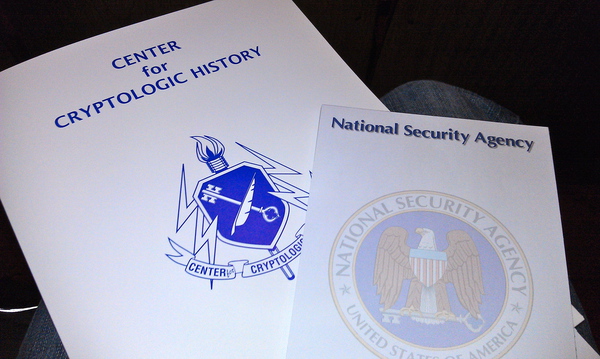Speaking at the 2015 Cryptologic History Symposium

The Cryptologic History Symposium sponsored by the NSA’s Center for Cryptologic History is coming up this fall, and they have accepted a paper proposal I recently submitted. The symposium will be on October 22nd and 23rd this year in Laurel, MD, and covers many fascinating topics involving the history of cryptology. I attended the 2013 symposium and it was extremely interesting – be sure to read my article about it to get a sense of what’s covered.
For this year’s symposium, I will be giving a presentation in the “Ciphers and Crime” panel called “The Zodiac Ciphers: What do we know and when do we stop trying to solve them?” The talk will be a quick overview of the case, details on the ciphers, many observations about their contents, and results of my experiments designed to rule out different ways Zodiac may have constructed the unsolved 340-character cryptogram. It’s going to be very challenging to pack so much info into the 25 minutes they have allotted to me. Here is the abstract for my paper:
Over 45 years ago, the serial killer known as Zodiac taunted the San Francisco Bay area with cryptic letters that were widely published in newspapers. One letter contained a cryptogram (Z408) which was quickly solved by a high school teacher. A second cryptogram (Z340) was sent a few months later. It appeared similar in construction to the first, but remains unsolved to this day. The killer later mailed two additional smaller cryptograms (Z13 and Z32) which also remain unsolved. Here we summarize many facts and observations known about Zodiac’s cryptograms. Many hypotheses on the construction of Z340 have been explored but no solution has been found. Systematic exclusion of hypotheses is difficult and tedious. We attempt to address this with multi-objective optimization programming to generate cryptograms simulated under various construction hypotheses. The simulated cryptograms are artificially evolved to maximize similarities to the real Z340. If, under a given hypothesis, we can solve the numerous simulated cryptograms, and Z340 was constructed using the same hypothesis, then the solution to Z340 should be easily found. If it is not, then this failure provides strong evidence against a specific hypothesis. Thus hypotheses can be systematically excluded.
There is more information about the conference at this link. The proceedings may seem dry and academic, but if you have any interest at all in the history of codemaking and codebreaking, I guarantee you will be intrigued by the range of topics covered at these symposiums.
Hope to see you there! And thanks to Klaus Schmeh for encouraging me to submit a presentation.